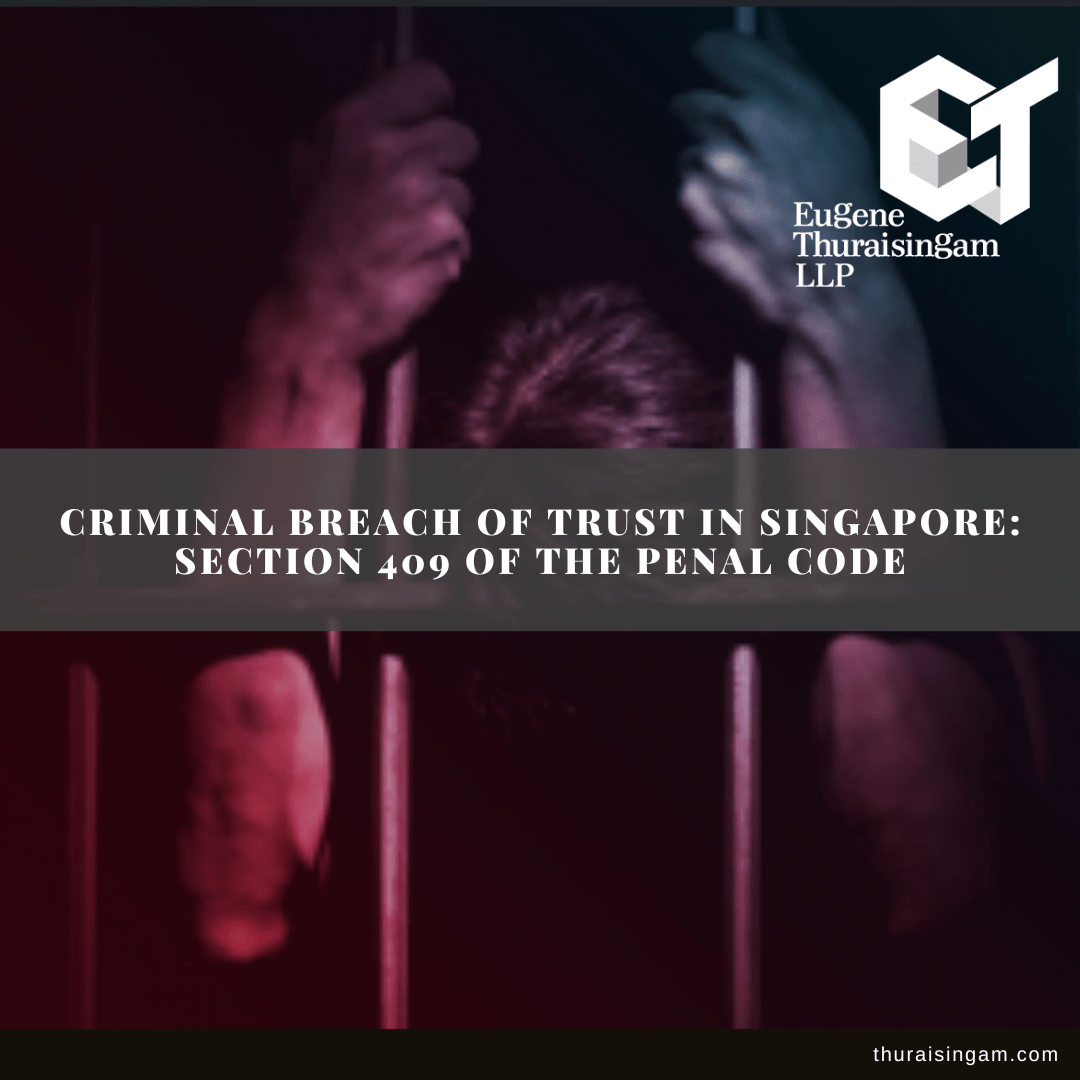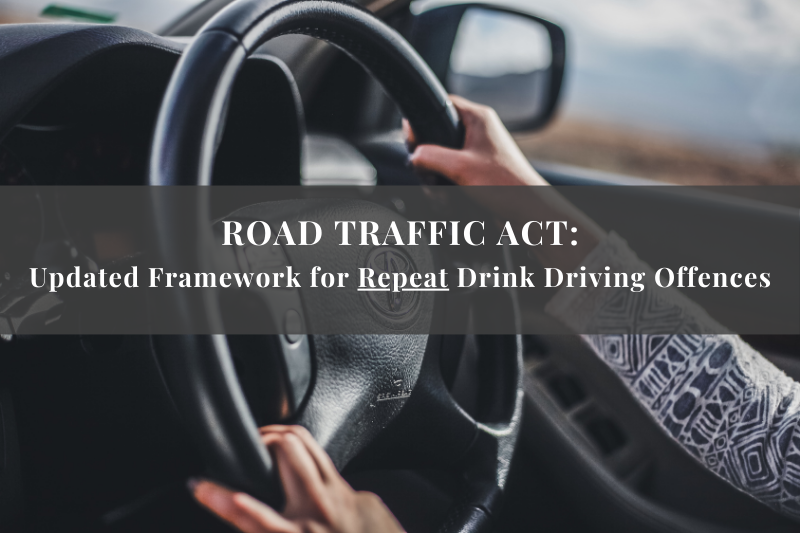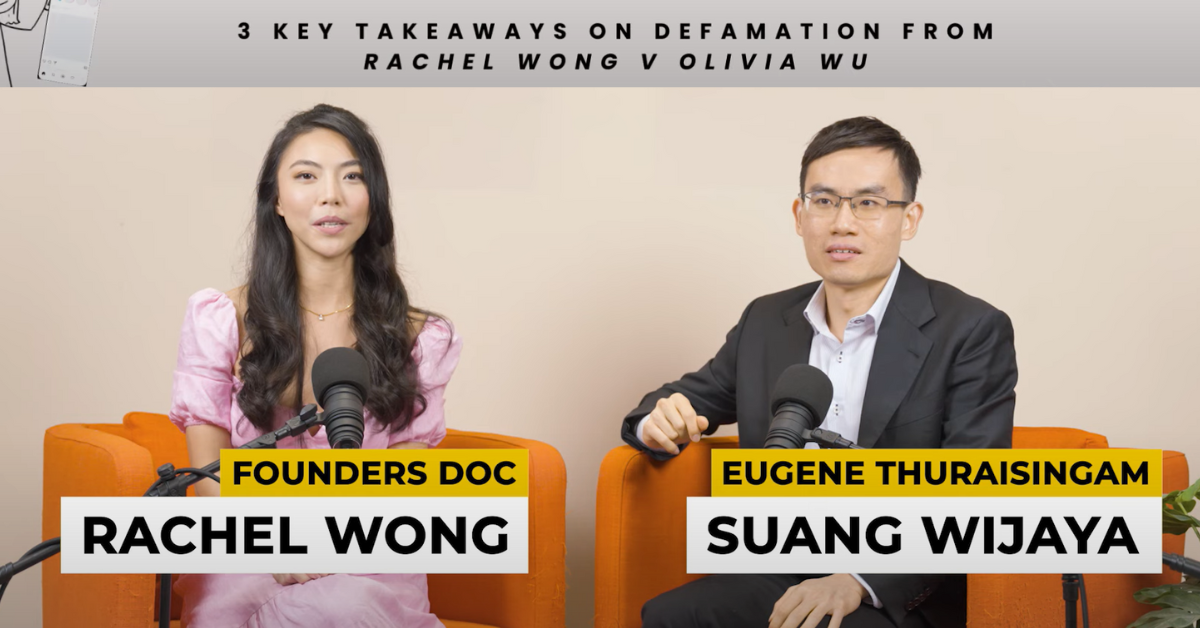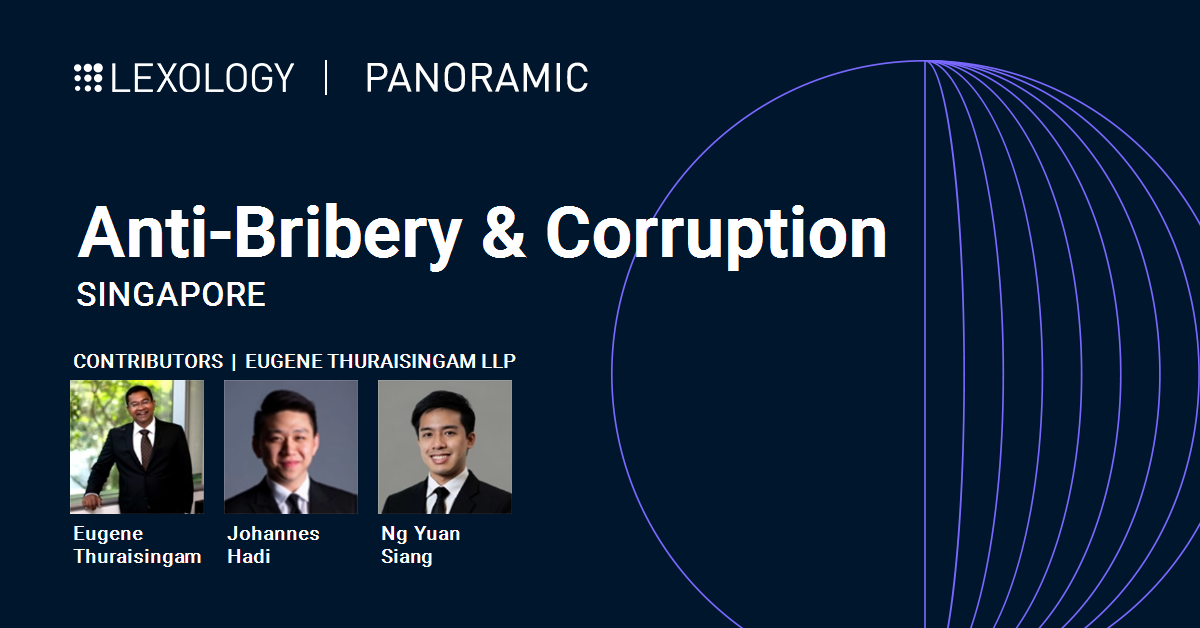Criminal Breach of Trust in Singapore: section 409 of the Penal Code
Public Prosecutor v Lam Leng Hung and Others [2018] SGCA 7 – Implications for Accused Persons Previously Convicted of an Offence under Section 409 of the Penal Code by Suang Wijaya*
The recent Court of Appeal decision in Public Prosecutor v Lam Leng Hung and others [2018] SGCA 7 (Lam Leng Hung) brought welcome public attention to the doctrine of separation of powers. Another topic that also deserves attention is the implications that decision has for persons already convicted under the wrong interpretation of section 409 of the Penal Code (Cap 224, 2008 Rev Ed). This article considers that issue.
Introduction
As is now well known, the Court of Appeal’s recent decision in Lam Leng Hung has clarified that Tay Choo Wah v Public Prosecutor (Tay Choo Wah)1, a “longstanding” decision, had wrongly interpreted section 409 of the Penal Code (Cap 224, 2008 Rev Ed) (Section 409). This article explores what, if any, remedies that are available to persons who have been wrongly convicted for criminal breach of trust (CBT) as an “agent” under Section 409 when, according to Lam Leng Hung, these persons should always have been convicted for plain CBT under section 406 of the Penal Code (Cap 224, 2008 Rev Ed) (Section 406).
The procedural route for re-opening a conviction based on a misinterpretation of Section 409 depends on the course previously taken by the persons convicted. There are three broad categories of persons previously convicted. These are (a) persons who pleaded guilty; (b) persons convicted after a trial and did not appeal against conviction; and (c) persons convicted after a trial and did appeal against conviction.
As I will discuss below, it appears that under the law as it currently stands, persons who erroneously pleaded guilty to a Section 409 charge (ie, category (a) above) may find it more difficult to re-open their convictions than persons who claimed trial (ie, categories (b) and (c)).
Persons Who Pleaded Guilty
Sundaresh Menon CJ’s decision in Koh Bak Kiang v Public Prosecutor (Koh Bak Kiang)2 has clarified that where a person had been wrongly convicted after a plea of guilt, the proper procedure would be to take out an application to the High Court for criminal revision under section 400 of the Criminal Procedure Code (Cap 68, 2012 Rev Ed) (CPC), to set aside his defective plea of guilt.
In Koh Bak Kiang, the accused had in 2007 pleaded guilty to charges of trafficking in diamorphine. The accused had asserted, through his plea in mitigation, that he did not know that he was carrying diamorphine. This assertion rendered his plea to be defective. This was because, at the time of the accused’s plea, the Court of Appeal had already handed down its decision in Tan Kiam Peng v Public Prosecutor (Tan Kiam Peng)3 where the Court of Appeal made clear that the mens rea for drug trafficking is knowledge of the precise nature of the drug that is the subject matter of the charge.4
Menon CJ noted in Koh Bak Kiang the well-established threshold for invoking the High Court’s revisionary jurisdiction, which is that of “serious injustice”.5 In Koh Bak Kiang,6 Menon CJ found “significant” the fact that Tan Kiam Peng had already been decided at the time of the accused’s guilty plea. On this basis, the first instance judge had not ensured that the guilty plea was properly taken.7 Menon CJ held that this was sufficient to give rise to “serious injustice”.
However, accused persons who have pleaded guilty to a charge under Section 409 stand in a different position from the applicant in Koh Bak Kiang. The first instance judges who had recorded defective guilty pleas under Section 409 cannot be said to have failed to ensure that the guilty pleas were properly taken. Those judges would have “faithfully follow[ed] the law as then articulated” by the High Court in Tay Choo Wah.8 In fact, those judges would have been bound by Tay Choo Wah to accept a guilty plea under Section 409 by an accused who had admitted to being an “agent” by being an officer of a company. The case law suggests that erroneous convictions in these circumstances may not give rise to “serious injustice” required for purposes of invoking the High Court’s revisionary jurisdiction. Menon CJ in Public Prosecutor v Ong Say Kiat (Ong Say Kiat)9 endorsed the following passage:
[T]he [revisionary] jurisdiction ought not be exercised where any grievance allegedly suffered by the applicant arises out of a change in the law. If it were otherwise, then, notwithstanding the expiry of the appeal period, it would be open to persons to challenge decisions by way of revision.
[emphasis in underline original]
Persons Who Were Convicted After a Trial and Did Not Appeal Against Conviction
Section 308(1) of the CPC permits the High Court, upon application by a person who had been convicted at first instance but did not appeal against the decision, to grant the person an extension of time to appeal the decision out of time.
In Ong Say Kiat,10 Menon CJ sets out a simple test for determining whether extension of time to appeal should be granted, where the accused seeks to rely on case law developments occurring long after the first instance judgment:
Suppose the [relevant decision] had been handed down one week after the respondent was sentenced: would the [proposed appellant] have been able to rely on it if he had duly filed an appeal? It was clear to me that the answer to this could only be in the affirmative. That being the case … there was really no defensible reason why the [proposed appellant] should not be allowed to now pursue an appeal on the basis of the [relevant decision] just because that decision happened to have been handed down [a long time], instead of just one week, after the respondent was sentenced.
Menon CJ noted that the applicable threshold for invoking the High Court’s appellate jurisdiction, even in a case where the proposed appellant is seeking extension of time to appeal long after his right to appeal has lapsed, is “plainly different” from the applicable threshold for invoking the High Court’s revisionary jurisdiction.11 Unlike an applicant for criminal revision, there is no need for a proposed appellant to show “serious injustice”.12
On the authority of Ong Say Kiat therefore, it appears that for the category of persons who have been convicted under Section 409 after trial but did not appeal against conviction, the High Court will likely grant extension of time to appeal.
Persons Who Were Convicted After Trial and Did Appeal Against Conviction
It is now well-established that a Court exercising its criminal appellate jurisdiction has the inherent power to re-open a concluded criminal appeal.13
To persuade the Court to do so, the accused must satisfy the court that there is “sufficient material on which the court can say that there has been a miscarriage of justice”14 in accordance with the principles set out in Kho Jabing v Public Prosecutor (Kho Jabing).15 The Court of Appeal in Kho Jabing appeared to accept that where there are jurisprudential developments subsequent to a concluded criminal appeal which would be material to the correctness of the accused’s conviction, then the necessary threshold for invoking the appellate court’s review powers would be satisfied.16
Hence, persons wrongly convicted of a Section 409 offence after trial and had their appeals dismissed would likely be able to avail themselves to Lam Leng Hung in invoking the High Court’s powers of review.
Some Thoughts
From the above discussion, a few points are worth considering.
First, it is unsatisfactory that as the case law currently stands, whether persons previously convicted under Section 409 can rely on Lam Leng Hung to re-open their convictions may turn on whether they had pleaded guilty or disputed liability. As discussed above, a judicial error which becomes apparent only after subsequent jurisprudential developments: (a) is insufficient to give rise to “serious injustice” necessary for invoking the High Court’s revisionary jurisdiction; but (b) is sufficient for invoking the High Court’s appellate jurisdiction, including its powers to extend time to appeal or review a concluded appeal.
Second, there may need to be a proper re-examining of whether a wrong conviction should per se justify the conviction being re-opened. Our Court of Appeal has observed in Public Prosecutor v Mohd Ariffan bin Mohd Hassan:17
… there is a dire anxiety on the part of the court not to convict an innocent person or to impose a sentence that is out of proportion to the criminality of an offender’s conduct … Every wrongful conviction or excessive sentence not only undermines public confidence in the ability of the courts to reach correct decisions but also, and more fundamentally, runs contrary to the very purpose of criminal law itself, which is to punish the guilty and protect the innocent … The law strains against and works doubly hard to prevent any erroneous deprivation of liberty.
[emphasis added]
However, dealing with the impact on previous convictions of the decision of the UK Supreme Court in R v Jogee; Ruddock v the Queen,18 the English Court of Appeal in R vJohnson appears to have struck the balance differently:19
[A] long line of authority clearly establishes that if a person was properly convicted on the law as it then stood, the court will not grant leave without it being demonstrated that a substantial injustice would otherwise be done. The need to establish substantial injustice results from the wider public interest in legal certainty and the finality of decisions made in accordance with the then clearly established law. The requirement takes into account the requirement in a common law system for a court to be able to alter or correct the law upon which a large number of cases have been determined without the consequence that each of those cases can be re-opened. It also takes into account the interests of the victim (or the victim’s family), particularly in cases where death has resulted and closure is particularly important.
The above points may, in an appropriate case, be the subject of full arguments and determination by the Courts, if necessary by way of criminal reference to the Court of Appeal.
Timely resolution of these points is important. First, judicial pronouncements on the law are, generally, “fully retroactive in nature”, unless the Court takes the exceptional course of restricting the retroactive effect of its pronouncements.20 The Court of Appeal in Lam Leng Hung, while recognising that the error perpetuated by Tay Choo Wah had been “longstanding”,21 did not pronounce that its interpretation of Section 409 would only have prospective effect. Second, the difference between a conviction under Section 409 and a conviction for plain CBT under Section 406 is stark. The maximum imprisonment sentence for plain CBT is seven years, while the maximum imprisonment sentence for CBT as an “agent” is 20 years. Third, a conviction based on a misinterpretation of the word “agent” under Section 409 appears particularly susceptible to being re-opened. It will likely be plain on the face of the record whether the accused had been wrongly convicted under Section 409 on the ground that he was an officer of the company, as opposed to being a professional agent as is now required by Lam Leng Hung. This is unlike, say, a conviction based on a misunderstanding of the mens rea for a common intention offence under section 34 of the Penal Code (Cap 224, 2008 Rev Ed) (ie, that the accused needs to have had the intention to commit the primary act, not merely knowledge that the primary act would be likely to be committed by the co-accused). In this latter type of case, the evidence already adduced may well still be sufficient to support a conviction based on the correct understanding of the mens rea for a common intention offence.22
*”Public Prosecutor v Lam Leng Hung and Others [2018] SGCA 7. – Implications for Accused Persons Previously convicted of an Offence under Section 409 of the Penal Code” was the feature article in the April 2018 edition of the Law Gazette.
Footnotes
- [1974–1976] SLR(R) 725.
- [2016] 2 SLR 574.
- [2008] 1 SLR(R) 1.
- See Koh Bak Kiang v Public Prosecutor [2016] 2 SLR 574 at [37]–[38].
- Ibid at [35].
- Ibid at [36].
- Ibid at [41]–[43].
- See R v Johnson and others [2016] EWCA Crim 1613 at [2].
- [2017] 5 SLR 946 at [23].
- Ibid at [35].
- Ibid at [32].
- Ibid at [29]–[32].
- See Kho Jabing v Public Prosecutor [2016] 3 SLR 135.
- Ibid at [24].
- Ibid at [52]–[76].
- Ibid at [58] and [74]–[76].
- [2018] SGCA 10 at [57].
- [2016] 2 WLR 681.
- [2016] EWCA Crim 1613 at [18].
- See Public Prosecutor v Hue An Li [2014] 4 SLR 661 at [124].
- [1974–1976] SLR(R) 725 at [266] and [268].
- See Daniel Vijay s/o Katherasan and others v Public Prosecutor [2010] 4 SLR 1119 at [155][159]; see also R v Johnson and others [2016] EWCA Crim 1613.






